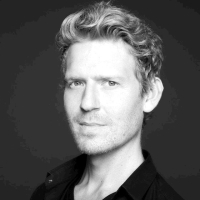
We’re all familiar with Machu Picchu, but have you heard about her bigger, more remote, more mysterious sister, Choquequirao? This lesser known, but equally stunning Incan site is as deserving of a visit as her iconic sibling, even if getting there is a little tricky…
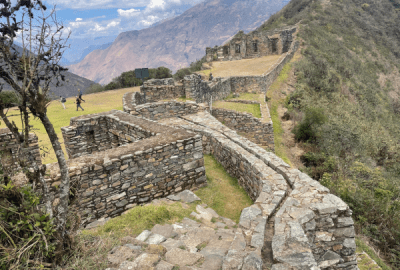
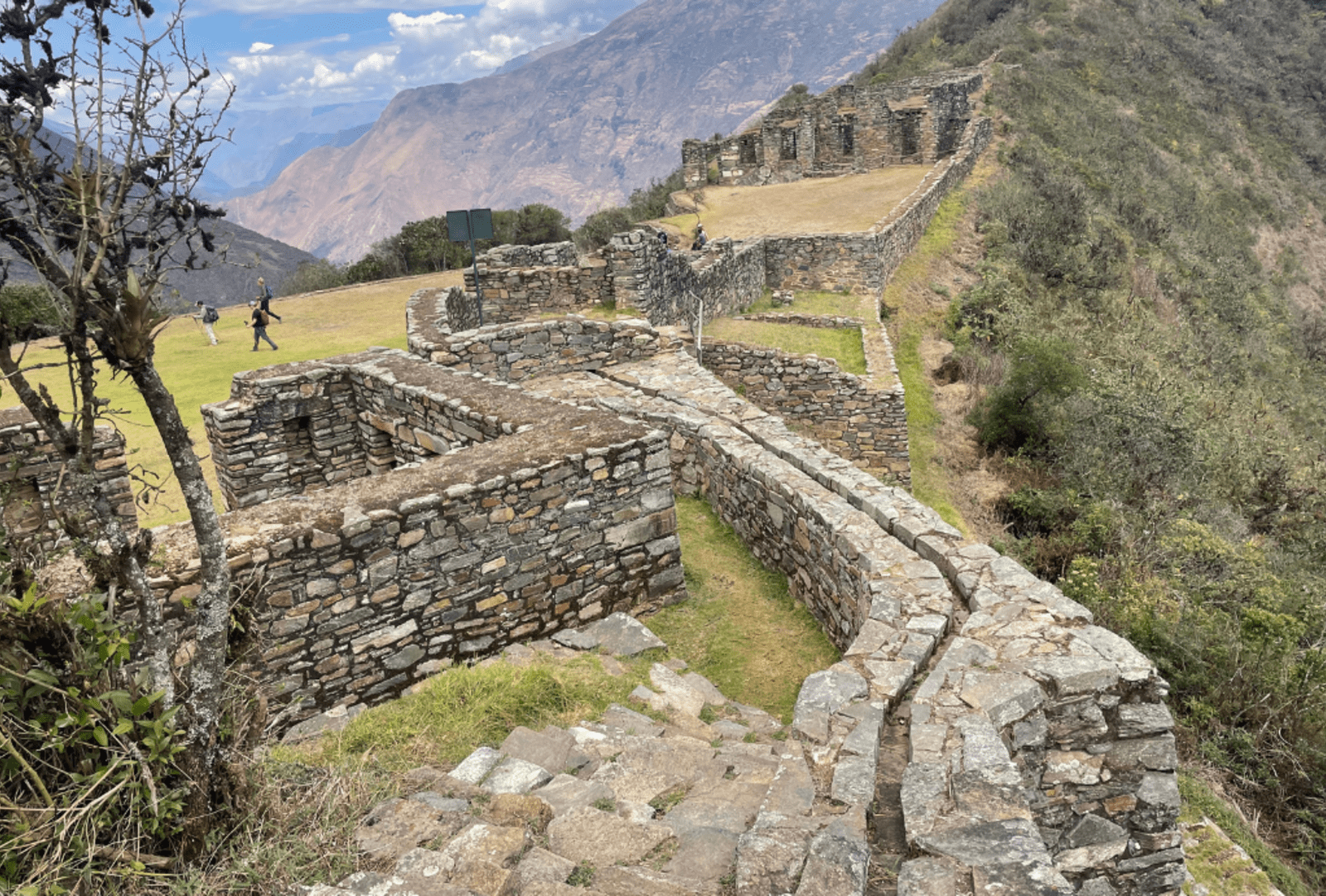

Choquequirao is a bit like Beyonce’s sister, Solange Knowles. They’re both less famous than their superstar sibling (some say that’s what makes them cooler), and they both have names that many are unsure how to pronounce (it’s Cho-keh-keer-ow and Suh-laanj).
When I decided to visit Peru, I knew I’d obviously visit Machu Picchu, but I also wanted to see some other Incan sites. Choquequirao was at the top of my list, it’s often referred to as “the other Machu Picchu” or “what Machu Picchu was like 50 years ago”.
Drawing comparisons is inevitable when discussing the two best preserved Incan cities in Peru. They share a lot in common, but it’s what sets them apart from each other that makes it a great idea to visit both if you can.
Compare The Pair
Age
Choquequirao is the older sister, but only by a few years. Both cities were built in the 15th century, at the height of the Inca Empire.
At that time the empire spanned 4000km from its northern border in Colombia to its southern border in Chile. That’s roughly the same distance as the width of Australia.
It was one of the biggest empires the world’s ever seen, and the Inca built many impressive cities throughout it. Choquequirao and Machu Picchu are two of the best preserved because they remained unknown to the Spanish invaders who destroyed most of the Incan empire after they arrived in 1533. Both cities were abandoned when the empire fell, and their existence remained a secret held by the surviving native Quechuan people for centuries.
The Europeans searched for generations to find the remote lost cities they’d heard whispers about, but didn’t stumble across Choquequirao or Machu Picchu until 1710 and 1911 respectively. By then, the cities were covered in decades worth of dense vegetation, but were undisturbed (except by some earthquakes).
Size
The excavation and restoration of both cities is still in progress, but from what we can tell, Choquequirao’s the bigger sister. Her footprint appears to be triple the size of Machu Picchu’s, but only about 30%-50% of the site has been excavated since work began in the 1990s, so that’s still an estimate.
Mystery
The Inca had no system of written communication that we’ve been able to decode yet, so it’s unclear exactly what purpose each city served, or how some of the elaborate structures were used. That makes both cities mysterious, but Choquequirao is the more enigmatic, almost baffling, of the two. There are architectural features unique to this city which researchers have been unable to explain, and much of the excavation work at Choquequirao has been put on hold until new technologies are invented that’ll allow the site to be properly studied without risk of damage.
Visitors
As of September 2023 Machu Picchu has a capacity of 5044 visitors per day, and tickets sell out months in advance. Some of those visitors trek the famous Inca Trail to get there, but most take the train and bus.
Meanwhile, just 45km away, Choquequirao doesn’t even get 5044 visitors per year. On an average day, only a dozen or so people arrive at the site, and all of them get there by foot, there’s no alternative (except maybe an uncomfortable donkey ride). Getting there means a 21km hike in, and then a 21km hike out the same way.
It’s worth noting that the crowds at Machu Picchu are super well-managed. Every visitor’s assigned an arrival and departure time. All foot traffic moves in one direction, and the guides keep everyone moving while they’re educating them on the history of the site. It’s busy, but never feels like an overcrowded theme park, which is a pleasant surprise given the volume of people there.
It’s a very different story at Choquequirao though, where visitors are free to roam and explore the plaza, the temples, the terraces at their own pace, often with no-one else around. You can sit on the stone walls and enjoy a picnic lunch, then take a nap on the grass of the main square while condors circle above you. You’d get a fine, possibly even arrested, if you tried that at Machu Picchu.

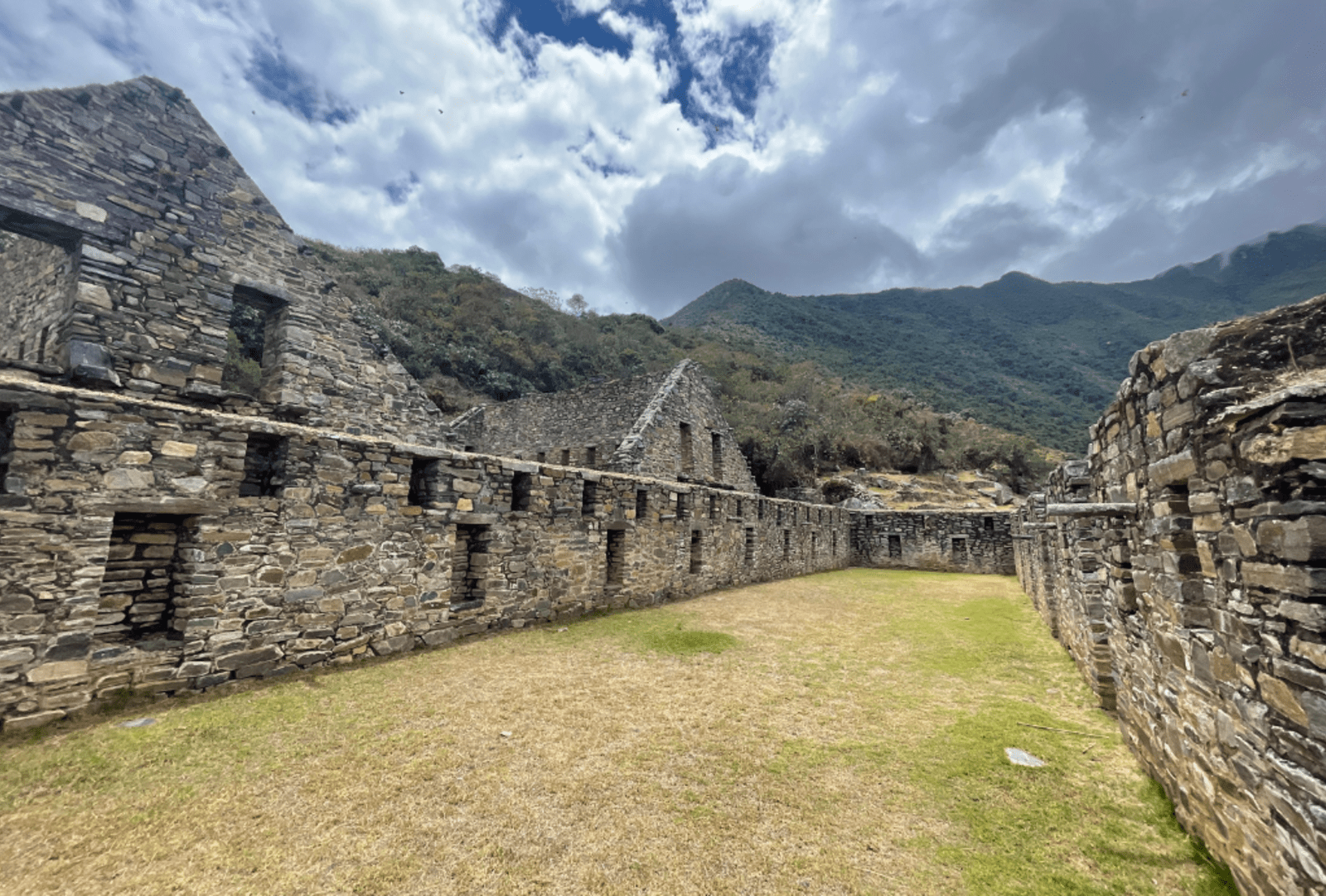

Why Do So Few People Go There?
The difficulty of the hike is the barrier for most travellers. It’s tough, rated as one of the hardest (but one of the 20 best) hikes in the world.
The classic Inca Trail is classified as a 4/5 in terms of difficulty, whereas the trek to Choquequirao is a 5/5, partly because it’s about 600m higher in altitude.
The degree of difficulty will depend on how many days you dedicate to the trek, and whether or not you go with a tour operator who’ll provide porters to carry your items.
Some folks do the round trip in three days. These people are obviously very fit, experienced hikers, especially the ones who take their own gear.
Others might do the trek in five days so they can move at a more leisurely pace.
Our group did it in four, which felt like the sweet spot. We went with G Adventures, so we also had a team of porters, cooks and herdsmen leading a pack of mules carrying our food, camping gear, and most of our luggage.
This made the trek much easier and more enjoyable than if we’d lugged our own items, but we all agreed it was still the most physically challenging thing we’ve ever done, particularly hiking the relentless uphill switchbacks on the first day.
What’s The Trek Like?
Most Choquequirao tours start early in Cusco with a 4-5 hour bus ride to Capuliyoc, where the road ends and the hiking begins.
From there, it’s a 3-4 hour descent into the Apurimac canyon. The views of the valley and surrounding mountains are stupefyingly beautiful, but the trail is rocky and dusty, so it’s important to strike a balance of admiring the landscape and watching your step.
You’ll take plenty of water and snacks, but some small settlements in the valley have set up campsites with shops, so cold drinks are available on the way. You’ll be grateful you remembered to bring cash.
After a quick lunch at the base of the valley, you’ll cross the river, and the 11km ascent up the other side will begin. Hopefully you’ve done a bit of training, this means 6-7 hours of steep climbing. There are no flat stretches on the relentless zig-zag path as it gains 1500m of altitude, and with the sun blaring, it’s a slog.
And it’s absolutely worth the sweat. The elating sense of accomplishment when you reach the mountaintop campsite, Marampata, will be so rewarding, you’ll (almost) forget how hard the hours of trudging were as you watch the sunset over the Andes.
Note: Some tour guides or solo-hikers choose to camp halfway up the mountain at Santa Rosa on day one. If it’s an option to trek all the way to Marampata on day one, go for it, it’s worth it. Getting those few extra hours of hiking out of the way means getting to Choquequirao earlier on day two. And the sunset vista from Marampata is a treat in itself.
On day two, an early 90-minute hike through a cloud-coated mountaintop rainforest leads to the ultimate payoff: emerging into “the last refuge of the Inca”, “the cradle of gold”, Choquequirao.

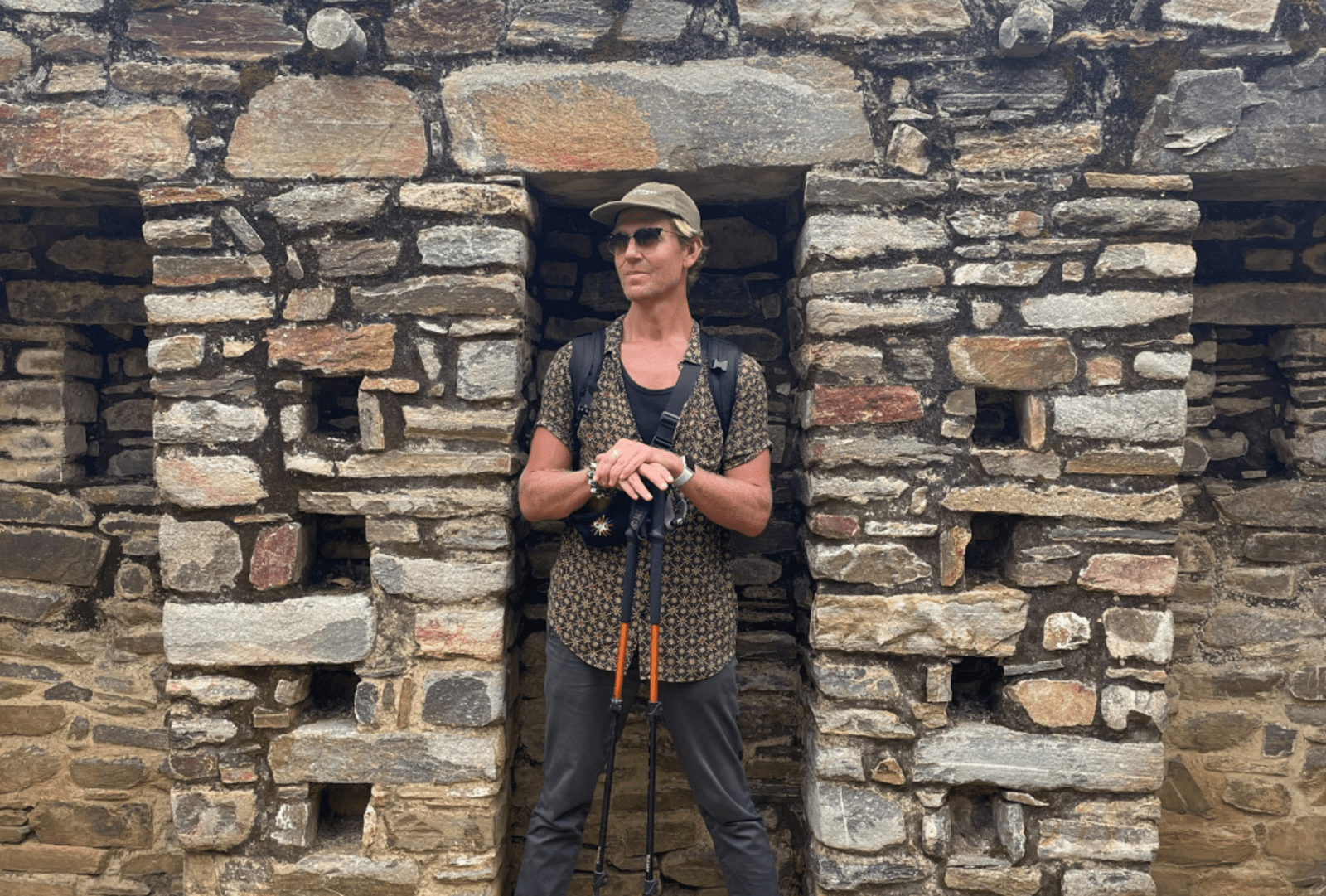

The Main Event
The thrill of standing in the open-air temple looking out over the 500+ year old city is an unforgettable sensation, and it feels so much sweeter knowing the effort it took to get there.
The sense of awe only grows throughout the day, meandering through the stone structures. The engineering feats achieved using only stone tools are mind-blowing. The same is true at Machu Picchu, but at Choquequirao the silence and solitude amplify the amazement.
One of the many advantages of having a knowledgable guide (ours, Wachi, had been to the site 40+ times) is the insights they offer. But even the most educated guides can’t offer explanations for the “experimental'' architectural elements at the site, many of which are yet to be fully understood.
Why are there donut-shaped stones set in some of the walls? We’re not sure. What’s buried under the centuries of dirt and turf covering the temple’s floor? Probably an encrypted message, but it’ll stay buried until we have the technology to uncover and decipher it.
Choquequirao is still slowly revealing her secrets. On the western edge of the city, on the sheer face of the mountain, a stretch of farming terraces was unearthed just 20 years ago. The stone walls of these terraces have a unique and surprising feature: they’re not just functional, they’re a breathtaking work of stone art, a mosaic depicting 22 white llamas approaching the citadel. It’s unlike anything else the Inca built, and it’s not the only feature that distinguishes Choquequirao from her sisters.
After a full day of exploring the homes and farmlands of people who lived in this remote part of the world five centuries ago, it’s time to return to the campsite before another glorious sunset. On clear days Choquequirao is visible from Marampata, so you can keep admiring it from afar.
The return trip starts at dawn on day three, and it’ll get you huffing and puffing, but two things make it easier than the approach:
-
The trek from Marampata back to Capuliyoc can easily be split across two days.
-
You’ll be floating on a joy-cloud after such a wondrous day wandering the ruins.
Note: some operators offer a tour that continues from Choquequirao all the way to Machu Picchu, but availability depends on conditions. Landslides in the area have made things tricky.
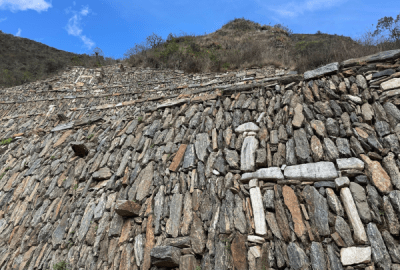


Which Sister’s The Golden Child?
Having visited both sites, I’ll say this: they’re both spectacular, and both absolutely worth a visit if you can.
Machu Picchu is a must-see icon, one of the most recognisable landmarks on our planet. It’s the Jewel of the Andes for good reason, and I’ve loved being able to describe her wonders.
But it does feel extra special to be able to tell people about the experience of trekking to a little-known Incan city on a day when there were no other visitors, so I’ve found myself gushing over Choquequirao a bit more enthusiastically.
The good news? G Adventures offer an experience that takes guests to Choquequirao AND Machu Picchu on their 6 day Choquequirao to Machu Picchu Express tour, so you can compare the pair for yourself.
Worth Noting
For years there has been talk of building a cable car that will take travellers from Capuliyoc to Choquequirao in a matter of minutes. This probably won’t happen before 2030, but when it's operational it’s expected that Choquequirao will see as many visitors as Machu Picchu each day.
This is good news for anyone who wants to visit but isn’t keen on the hike.
For anyone who wants to see the ruins without the crowds, though, it means time is of the essence.
Need To Know
The best time to go is the dry season, April - October. The trail is “busiest” in June - July, but that’s still only a few dozen people per day.
Do some uphill training before you go, strengthen up your quads, calves and glutes. You’ll be grateful you did!
Take bug spray, use it liberally.
Ready to hit the trail? Find incredible adventure tours here:
Site quick links
Help & support
Flight Centre acknowledges the Traditional Custodians of Country throughout Australia.
© Flight Centre Travel Group Limited. ATIA Accreditation No. A10412.
*Travel restrictions & conditions apply. Review any specific conditions stated and our general terms at Terms and Conditions. Prices & taxes are correct as at the date of publication & are subject to availability and change without notice. Prices quoted are on sale until the dates specified unless otherwise stated or sold out prior. Prices are per person.

